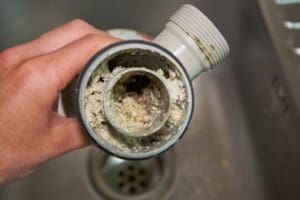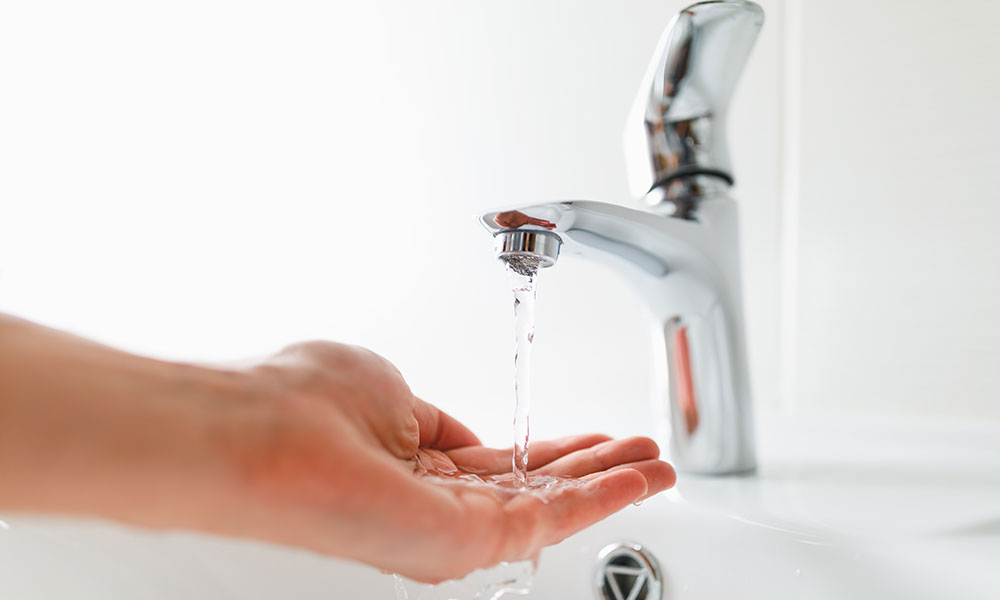Tested Approaches for Dealing with Low Water Pressure in Your Home
Tested Approaches for Dealing with Low Water Pressure in Your Home
Blog Article
We've found this post relating to 4 Ways to Troubleshoot Low Water Pressure down the page on the web and accepted it made sense to relate it with you on this page.

Low water stress in your house can be an aggravating problem, affecting whatever from showering to washing dishes. If you're experiencing weak water circulation, there are a number of possible reasons and remedies to check out. In this overview, we'll go over common reasons for low water stress and practical steps to resolve the concern properly.
Introduction to Low Water Stress
Low tide stress takes place when the circulation of water from your faucets, showers, and other fixtures is weaker than usual. This can make everyday jobs extra challenging and less reliable. Comprehending the reasons for low tide pressure is important to locating the appropriate option.
Common Root Causes Of Low Tide Stress
Pipeline Obstructions
Over time, pipes can come to be clogged with mineral deposits, sediment, or debris, restricting the flow of water. This is a typical concern in older homes with galvanized steel pipelines.
Deterioration
Deterioration within pipes can result in leaks and decreased water stress. Corrosion buildup can constrict water flow, specifically in maturing plumbing systems.
Faulty Pressure Regulators
Pressure regulators are accountable for preserving regular water stress in your home. If they malfunction, it can result in low water stress or unequal flow throughout your house.
Municipal Water Issues
Sometimes, the issue exists outside your home. Metropolitan water problems, such as main line leaks or upkeep job, can momentarily minimize water pressure in your area.
Just How to Detect Low Water Stress
Checking Faucets and Fixtures
Start by examining the water pressure at various taps and fixtures throughout your home. If the issue is isolated to details areas, it might indicate local issues.
Checking Pipelines
Examine visible pipes for signs of leakages, rust, or blockages. Focus on any uncommon audios, such as knocking or rattling pipelines, which could suggest problems within the plumbing system.
Consulting with a Plumber
If you're not able to pinpoint the cause of low tide pressure, consider hiring a specialist plumber to perform a comprehensive assessment. They can identify underlying concerns and suggest appropriate solutions.
Do It Yourself Solutions to Fix Low Tide Stress
Cleaning Aerators and Showerheads
Mineral deposits can build up in aerators and showerheads, reducing water circulation. Get rid of and clean these elements on a regular basis to boost water stress.
Flushing Hot Water Heater
Sediment buildup in the water heater can limit circulation and decrease performance. Purging the container occasionally helps get rid of sediment and preserve optimal performance.
Checking Stress Regulatory Authority
Guarantee that the pressure regulatory authority is operating correctly. Readjusting or changing the regulator can aid bring back correct water stress throughout your home.
Clearing Up Clogs in Pipeline
For small obstructions, try utilizing a plumbing snake or chemical drain cleaner to clear blockages in pipes. Be cautious when making use of chemicals and comply with safety standards.
When to Call a Specialist Plumber
If do it yourself efforts stop working to resolve the concern or if you believe significant plumbing issues, it's best to seek aid from a qualified plumber. They have the experience and tools to address intricate issues securely and successfully.
Safety Nets to Keep Water Pressure
Routine Upkeep
Arrange regular maintenance for your plumbing system to avoid problems such as rust, leaks, and obstructions. Resolving minor troubles early can aid prevent even more significant repair services later.
Mounting a Stress Booster
Take into consideration installing a pressure booster pump to enhance water stress in areas with constantly reduced flow. This can be especially helpful for multi-story homes or homes with high-demand fixtures.
Monitoring Water Usage
Bear in mind water use practices and avoid ill-using the plumbing system. Easy changes, such as staggering showers and laundry lots, can help keep appropriate water stress.
Final thought
Handling low tide pressure can be discouraging, however recognizing the underlying reasons and executing proper services can bring back ideal circulation throughout your home. Whether it's cleaning up aerators, checking pipelines, or seeking advice from a plumber, taking positive steps can make sure a constant supply of water for your day-to-day requirements.
FOUR WAYS TO FIX LOW WATER PRESSURE NOW
Turning on a shower or faucet only to find the water comes out in a sad, slow drizzle is never a good feeling. How exactly are you supposed to wash a pan or take a quick shower when it takes 10 minutes just to rinse off a little soap? The good news is that when your water pressure is bad, there's always a cause: typically one that can be easily fixed. Here are some of the most common causes of low pressure and what you can do to fix the issue:
DEBRIS AND MINERAL DEPOSIT BUILDUPS
If you notice low water pressure from just one or two of the fixtures in your house, the problem likely has to do with debris buildup. Water is full of minerals and other debris, all of which can accumulate in your pipes and on your fixtures. This can cause a blockage that affects how much water flows through. To fix this, try filling a small plastic bag with white vinegar, and use a rubber band to hang it around your showerhead or faucet. Let the head of the fixture soak for a few hours, and the vinegar should loosen the deposits.
WATER LEAKS
Leaks are another common cause of low water pressure. If water is flowing out of your plumbing through a hole or crack before it can reach your fixture, the pressure coming out of the faucet or showerhead will be lower. A plumbing professional is your best bet for finding and repairing a leak in your water supply pipes.
Leaks are another common cause of low water pressure. If water is flowing out of your plumbing through a hole or crack before it can reach your fixture, the pressure coming out of the faucet or showerhead will be lower. A plumbing professional is your best bet for finding and repairing a leak in your water supply pipes.
FOUR WAYS TO FIX LOW WATER PRESSURE NOW
Turning on a shower or faucet only to find the water comes out in a sad, slow drizzle is never a good feeling. How exactly are you supposed to wash a pan or take a quick shower when it takes 10 minutes just to rinse off a little soap? The good news is that when your water pressure is bad, there's always a cause: typically one that can be easily fixed. Here are some of the most common causes of low pressure and what you can do to fix the issue:
DEBRIS AND MINERAL DEPOSIT BUILDUPS
If you notice low water pressure from just one or two of the fixtures in your house, the problem likely has to do with debris buildup. Water is full of minerals and other debris, all of which can accumulate in your pipes and on your fixtures. This can cause a blockage that affects how much water flows through. To fix this, try filling a small plastic bag with white vinegar, and use a rubber band to hang it around your showerhead or faucet. Let the head of the fixture soak for a few hours, and the vinegar should loosen the deposits.
WATER LEAKS
Leaks are another common cause of low water pressure. If water is flowing out of your plumbing through a hole or crack before it can reach your fixture, the pressure coming out of the faucet or showerhead will be lower. A plumbing professional is your best bet for finding and repairing a leak in your water supply pipes.
Leaks are another common cause of low water pressure. If water is flowing out of your plumbing through a hole or crack before it can reach your fixture, the pressure coming out of the faucet or showerhead will be lower. A plumbing professional is your best bet for finding and repairing a leak in your water supply pipes.
A VALVE ISSUE
If you have low water pressure throughout your home, check your main shut-off valve to make sure it's completely open. You may also want to see if there's a pressure-reducing valve installed. If there is, have a plumber help you adjust the settings to get the pressure you're looking for.
OTHERS USING WATER
Believe it or not, your low water pressure could be caused by your neighbors. If you notice low pressure at certain times of day, it may be because you and the people living next to you have similar schedules - when everyone is showering at the same time, the pressure will be lower in every home. Low pressure throughout the neighborhood may also be caused by an issue with your municipal water supply. If that's the case, call the supplier to see if they're working on the issue.
https://www.rotorooter.com/blog/water-leaking/low-water-pressure-fixes/

I found that blog posting about Dealing with Low Water Pressure in Your Home while doing a search on the web. Enjoyed our write up? Please share it. Let others locate it. Thanks so much for going through it.
Get Started Report this page